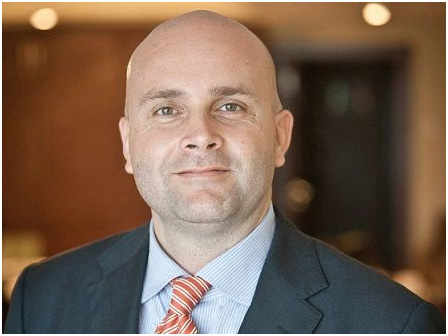The Country Manager, APM Terminals Nigeria, Mr David Skov, said the company had invested not less than $350 million (N80.5 billion) in yard expansion since port concession commenced in 2006.
Skov said this in a paper entitled, “Building Economic Capacity through Maritime Infrastructure Development – The APM Terminals Perspective’’, presented at the Nigerian Maritime Expo in Lagos.
According to him, the management has also increased the berth depth from 10.5 metres to 13.5 metres; purchased container handling equipment; and linked the rail tracks with the national rail network. “APM Terminals has also established a world-class training centre and crane simulation facility for our employees in Nigeria, and is also training crane operators from across the APM Terminals Global Network. Our investments in information technology have seen significant improvement in invoicing and tracking of accounts payable, improving cash flow and financial performance,” he said.
Mr Skov explained that with these investments in infrastructure and human capital , APM Terminals Apapa has become one of the most modern and efficient terminals in Africa and a key transportation hub. The investments made at APM Terminals Apapa in preparedness to receive larger vessels have made it a more competitive port of call and is increasing employment opportunities.
Skov said that at present, the largest ships calling at the port had a 4, 500 TEUs capacity (20 ft. container equivalent), while the Lome hub could host vessels with capacities that were as high as 8,000 TEUs.
“The port infrastructure plays an important role in the size of the vessels that call at various ports. Over the past 20 years, container vessels have grown from 6,000 TEUs to 19,000 TEUs capacity and are still growing. Not too long ago, vessels with 1,700 TEUs capacity were common in the nation’s ports. This has changed with the infrastructure developments in the sector and with more investments,’’ he said.
According to him, larger vessels will call at the nation’s ports which will significantly enhance the productive capacity of the country and improve the prosperity of its citizens with lower costs.
“This means that only ports and terminals with sufficient depth, quay front and equipment can accommodate these new larger vessels. This also means that ports with better access roads will be able to facilitate faster the trade requirements of the future. Our commitment to lifting global trade is reflected in APM Terminals’ continuous investment in infrastructure. The port industry, however, does not have the luxury of being able to simply react to changes in the market environment. We must be able to anticipate and deliver the terminal capacity and productivity that our customers will require,’’ the Country Manager said.
He, however, identified the company’s challenge as the discrepancy in lead times for construction. According to him, a vessel construction schedule may be calculated in months but a new container terminal design and development schedule must be calculated in years.
Skov said that the decisions of the company could be made much further in advance, as long as a decade in some instances.
He recalled that, “A bold move to concession Nigerian seaports was made in 2006.’’
“When APM Terminals won the concession to operate Apapa Container Terminal, we were faced with daunting challenges. The yard, buildings and equipment were in disrepair, with approximately 4,000 people actually living within the terminal area, making an already poor safety environment even worse. There was significant vessel congestion and unacceptably long container dwell times. A dysfunctional stacking system made it difficult to locate containers within the yard, and productivity in general was low.”
He said that as an organisation with safety as our number one priority, the first step they took was to ensure that the Apapa Container Terminal was a safe place for all to conduct their business.
He also recalled that the company cleared the debris, removed unauthorised structures within the terminal; fenced the perimeter of the facility for appropriate access control; and implemented internationally-recognised safety and security measures.
“Before APM Terminals took over the Apapa Port, Nigeria’s Liner Shipping Connectivity Index (LSCI) was constant and low,” he said.
LSCI measures the ability to move a cargo from one place to another with due cost, due time and due services.
Mr Skov had this to say about LSCI; “The LSCI has grown by 76 per cent from 13 to 23 in 2014.
“Thus, when container terminals invest in more capacity and higher productivity, it induces shipping lines to respond with more services, more port calls per service, bigger vessels, and this in turn increases LSCI. An increase in LSCI increases imports and reduces trade costs.
He said it is imperative that Nigeria continues to build the necessary maritime infrastructure required to be able to handle the growth in international trade.
By Pita Ochai
[divider]



